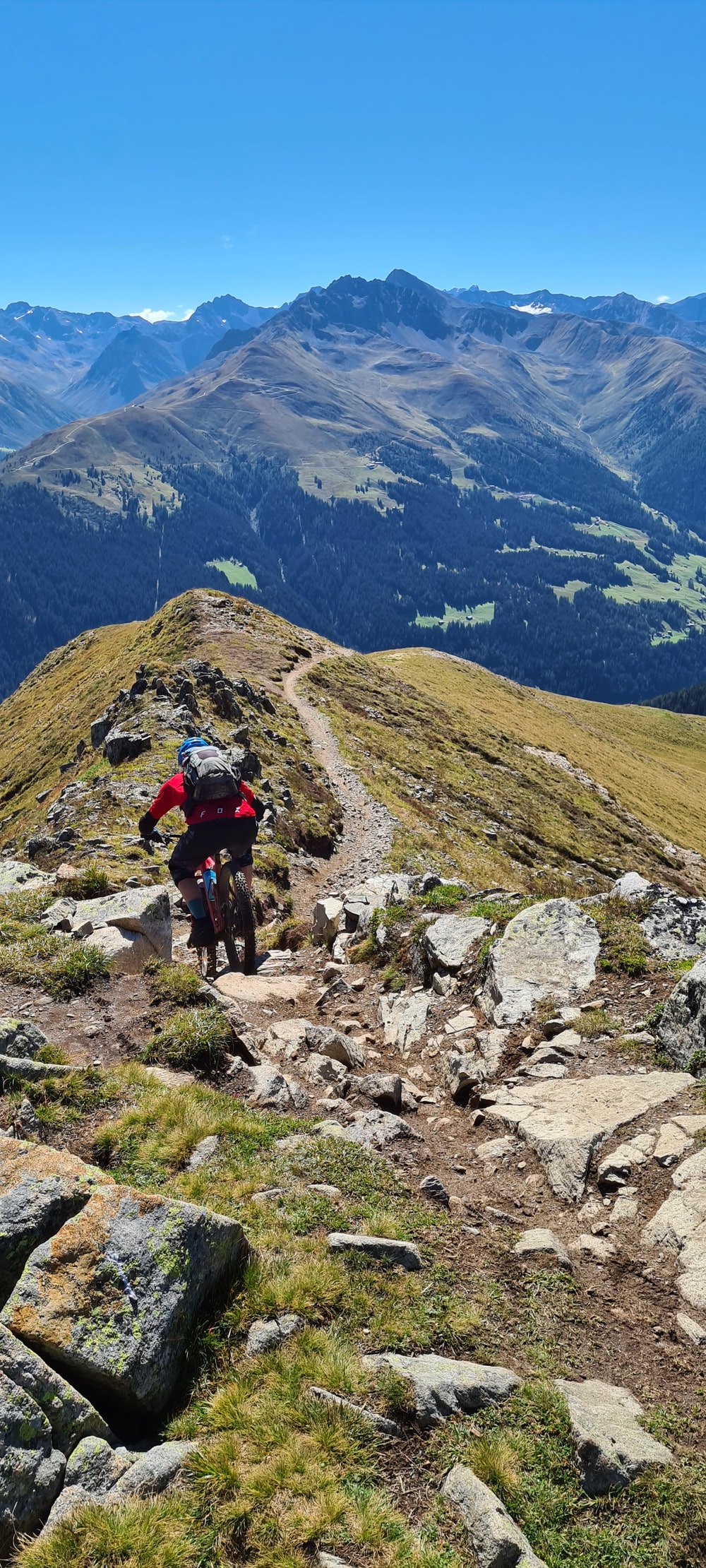If you’re new to mountain biking, picking your first bike can seem overwhelming. Two popular categories are trail bikes and enduro bikes. Though there are similarities, these bikes excel in different types of terrain. As you consider getting your first serious mountain bike, understanding the key differences will help determine if a trail bike or enduro bike best matches your riding style and local trails.
What Defines a Trail Bike?
Trail bikes blend climbing proficiency with moderate descending chops. They strike a balance making them versatile in more situations. These bikes sport 130-150mm of suspension travel, slackened head tube angles from 65-67 degrees, and modern trail bike geometry providing stable, predictable handling.
Trail bikes cover a range of intended purposes depending on components and frame material. Lower spec aluminum models compete in XC races and lighter trail riding. Higher end carbon trail bikes with beefier parts charge harder terrain. Most trail bikes run 29-inch or 27.5-inch plus sized tires providing traction and stability over obstacles.
Overall, trail bikes shine on flowing to moderately technical singletrack. They climb efficiently, corner intuitively, and handle rooted, rocky descents. Trail bikes suit newer riders seeking an agile, braking and turning confident machine. Experts enjoy them for big days with varied trail types. They work well as a quiver killer, especially in regions with diverse trails.
What is an Enduro Bike?
As the name suggests, enduro bikes focus on descending, trading some climbing prowess for charging downhill performance. Modern enduro bikes feature 150-170mm of travel, slacker head tube angles from 63-65 degrees, long reaches and wheelbases, and aggressive frame geometries. Components also prioritize strength and control for the gravity-focused riding.
While enduro bikes excel at descending, some riders wonder how they compare to bikes designed specifically for downhill riding. Can you use an enduro bike for downhill? Well yes, their capabilities definitely overlap, but there are some tradeoffs.
The best enduro bikes smash gnarly terrain at speed while still providing enough pedaling efficiency for some climbing. Beefy frames and parts shrug off the impacts and forces generated attaining maximum velocity over constantly changing terrain. Generous suspension soaks up big hits letting the tires maintain contact for control. Enduro bikes also corner aggressively to railing bermed turns linking rough trail sections.
While versatile trail bikes work well for many, enduro bikes target aggressive riders regularly hitting black diamond level terrain. The suspension and geometry gives experts the precise machine to push their downhill riding limits. These bikes require more skill and fitness to manage their handling, but reward in spades on rough terrain.
Head to Head Bike Comparison
Key Differences and Similarities Between Trail and Enduro Bikes
While both versatile long travel mountain bikes, key differences determine if a trail or enduro bike better suits your riding. Comparing vital areas like suspension, geometry, intended use, and components clarifies which excels for your local trails and riding style.
Suspension Travel
The extra travel gives enduro bikes an edge smashing successive hits at speed. Trail bikes work better on smooth to moderately rough singletrack. Both benefit from quality suspension and damping that maximize control.
Frame Geometry
Slacker front ends and longer wheelbases boost descending confidence and stability crucial for enduro riding. Shorter, steeper trail bikes are quicker handling and more agile for snaking singletrack. Modern designs across both categories improve versatility over older generations.
Components
Most enduro bikes spec burlier wheels, drivetrains, brakes, and tires to withstand punishing riding. Many trail bikes still use strong parts but may save weight for better climbing efficiency.
Some riders feel enduro bikes seem overkill for their local trails and style. Instead, they consider less extreme cross country bikes. What’s the difference between XC and enduro mountain bikes? Well enduro bikes focus on descending technical terrain, while XC bikes prioritize climbing speed and efficiency.
Intended Use
Enduro bikes target descending dominance. Trail bikes better balance climbing and moderate downhill. Consider your regular trails and riding style – new school bikes excel in their intended realm.
Despite differences optimizing them for varied riding, contemporary trail and enduro bikes share some welcome trends. Both categories adopted wider tire clearance, tubeless tire compatibility, shorter offset forks, dropper post compatibility, and progressive modern geometry. Riders of all skill levels benefit from these enhancements in stability, confidence, and control.
Determine The Ideal Bike With Your Riding Profile
Analyzing your local trails and honest assessment of your skill level and risk tolerance simplifies choosing between trail and enduro bikes. Consider these factors when deciding which suits you best.
Where You Ride
Your home trails should heavily influence your choice. Rugged, steep and gnarly terrain rewards an enduro bike’s capabilities. Flowing to moderately technical terrain better fits a trail bike. If you ride a mix and value climbing as well, lean trail.
Fitness Level & Ability
While heavy, long travel enduro bikes continue evolving for pedaling efficiency, they require more fitness and skill descending. Stronger riders push their limits more. If new or looking to progress skills, a trail bike provides a more forgiving platform suited for developing technique.
Risk Tolerance
The increased descending abilities of modern enduro bikes allow experts to push faster with more confidence. Yet they come with increased risk should something go wrong at speed over commits you aren’t skilled enough to handle. More conservative riders may prefer trails bikes for easier speed management.
Budget Bomber enduro bikes spec quality components and advanced materials increasing costs. Strong trail bikes exist at more budget-friendly price points. Identify how much you can spend before testing rides sway your decision.
Analyze Your Needs Against Bike Strengths
Choosing a trail or enduro bike need not overwhelm new mountain bikers. Consider your objectives and honestly evaluate your abilities and regular riding terrain against category strengths. This simplifies determining which bike suits your needs. Test ride styles side by side to experience key differences before deciding to maximize your next mountain bike investment.





